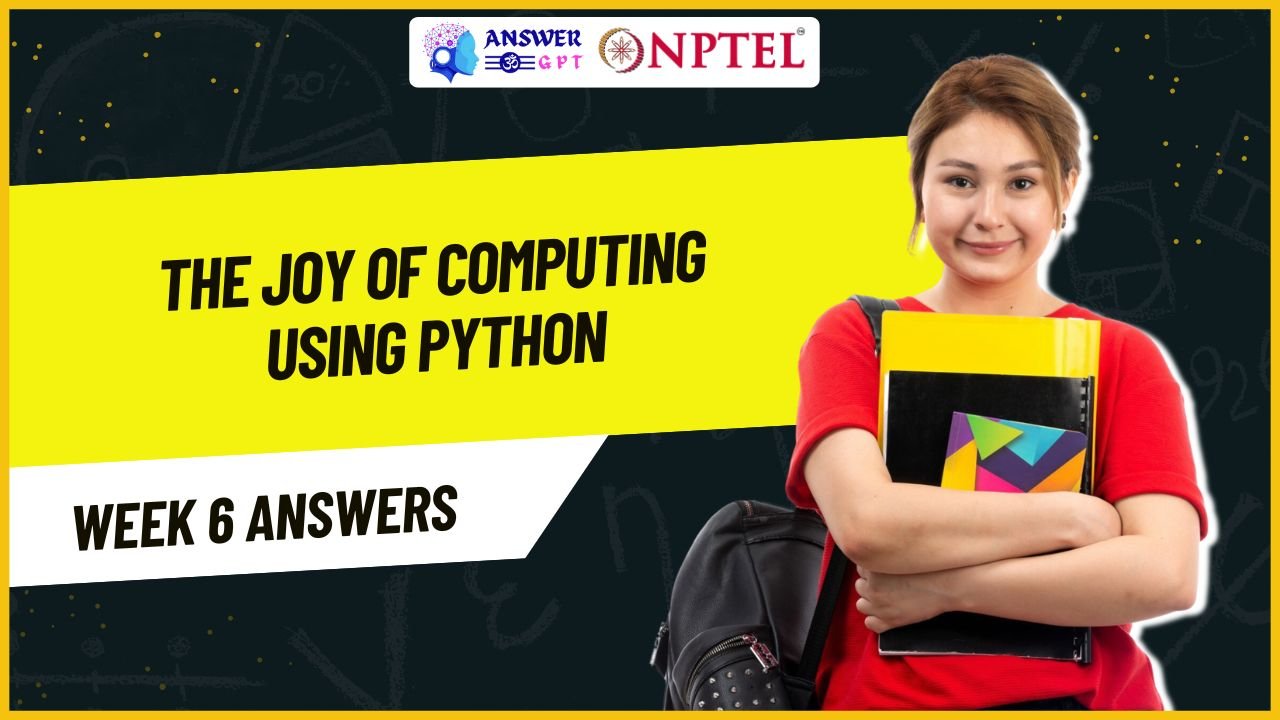Soft Skill Development Week 6 NPTEL Assignment Answers 2025
NPTEL Soft Skill Development Week 6 Assignment Answers 2024
1. Which part does education play in fostering creativity?
a) Incubation
b) Preparation
c) Illumination
d) Insight
✅ Answer: b
Explanation: Preparation is the stage where one gains knowledge and skills—education plays a major role here.
2. The relationship between the “flying machine” and the modern-day aeroplane is one of
a) Free-association
b) Divergent thinking
c) Analytical thinking
d) Analogy
✅ Answer: d
Explanation: The flying machine is used as an analogy to explain the principles behind the airplane.
3. Statements about intelligence and creativity:
A: Intelligence without attentiveness is like an average car with a poor driver.
B: The destructive potential of intelligence can be channeled into creativity.
(a) Both A and B are correct
(b) Neither A nor B are correct
(c) Only A is correct
(d) Only B is correct
✅ Answer: d
Explanation: B is true; A is metaphorically incorrect or debatable.
4. ___________ on earlier knowledge can potentially restrict creativity.
a) Dependence
b) Divergence
c) Fixation
d) None of the above
✅ Answer: c
Explanation: Fixation refers to being stuck in one way of thinking, limiting creative thought.
5. Red hat thinking is not relevant in ______________.
a) Decision making
b) Creative writing
c) Problem solving
d) None of the above
✅ Answer: d
Explanation: Red hat (emotions) is relevant to all; hence, none of the above is correct.
6. Which traits are found in creative people?
A: Comfort with uncertainty
B: Accepting failure
C: Hiding negative aspects
(a) A and B
(b) B and C
(c) A
(d) B
✅ Answer:a
Explanation: Creative people are open to uncertainty and learn from failure.
7. “Imported talent” syndrome
a) Leads to growth
b) Demotivates insiders
c) Attracts new talents
d) All of the above
✅ Answer: b
Explanation: Overreliance on external talent can demotivate existing employees.
8. Element of brainstorming that allows outrageous ideas:
a) Piggy-backing
b) Non-judgement
c) Freewheeling
d) Quantity over quality
✅ Answer: c
Explanation: Freewheeling encourages wild ideas, which is key in brainstorming.
9. Attribute listing and heuristic thinking:
A: New ideas from reshuffling attributes
B: Heuristics align with instinct more than logic
(a) Both A and B are correct
(b) Neither A nor B are correct
(c) Only A is correct
(d) Only B is correct
✅ Answer: a
10. Which is NOT a false assumption about creativity?
a) Creativity is only for idea teams
b) Creative people need to be managed differently
c) Tech departments aren’t creative
d) Everyone has some creativity
✅ Answer: d
Explanation: It’s TRUE that everyone has some spark of creativity — so this is not a false assumption.
11. Why is “mindmix” important for innovation?
A: Mixing ideas gives new ones
B: Left brain ≠ right brain
C: Both sides contribute to idea generation
(a) A and C
(b) A and B
(c) B and C
(d) C
✅ Answer: c
Explanation: The left and right brains contribute differently; mixing both is vital.
12. Daydreaming and critical thinking are unrelated.
(a) True
(b) False
✅ Answer: b
Explanation: False — Reflective thinking (daydreaming) supports creativity and critical insights.
13. Elements of critical thinking:
A: focusses on a specific problem
B: takes more time than memory tasks
C: deploys multipronged analytical methods
D: bypasses reasoning
(a) A, B and D
(b) A and C
(c) B and C
(d) C and D
✅ Answer: c
Explanation: Critical thinking is time-consuming and involves deep analysis.
14. Key to long-term learning is
a) Teachers
b) Self-motivation
c) Self-reliance
d) All of the above
✅ Answer: b
Explanation: Self-motivation drives sustained and independent learning.
15. Looking through a child’s eyes induces
a) Critical, curious
b) Curious, observant
c) Wondering, naïve
d) None
✅ Answer:b
Explanation: Childlike thinking inspires curiosity and close observation.

![[Week 1-8] NPTEL Soft Skill Development Assignment Answers 2025](https://answergpt.in/wp-content/uploads/2025/01/Soft-Skill-Development-2025.jpg)

![[Week 1-8] NPTEL Soft Skill Development Assignment Answers 2024](https://answergpt.in/wp-content/uploads/2024/01/NPTEL-Soft-Skill-Development-Assignment-Answers-2024.jpeg)

